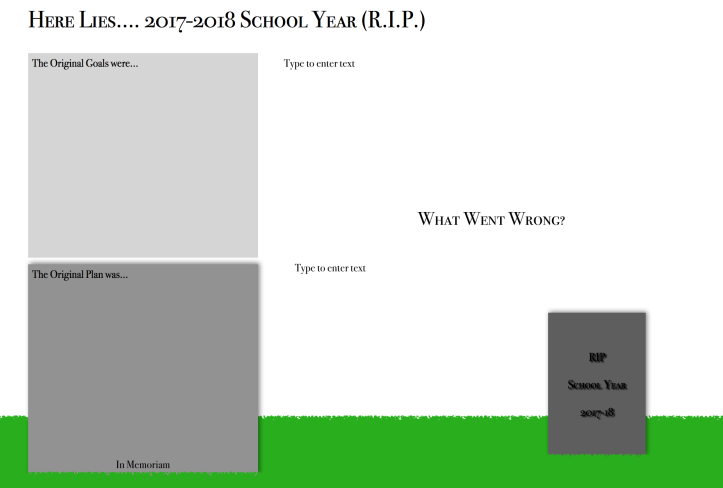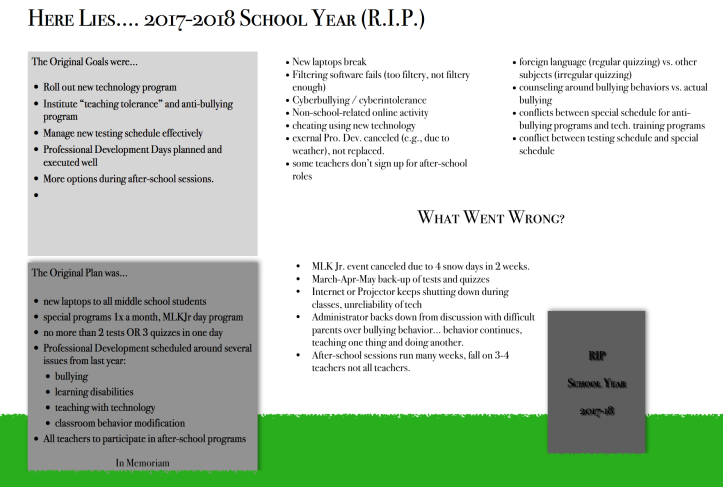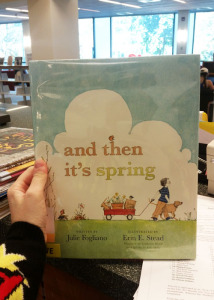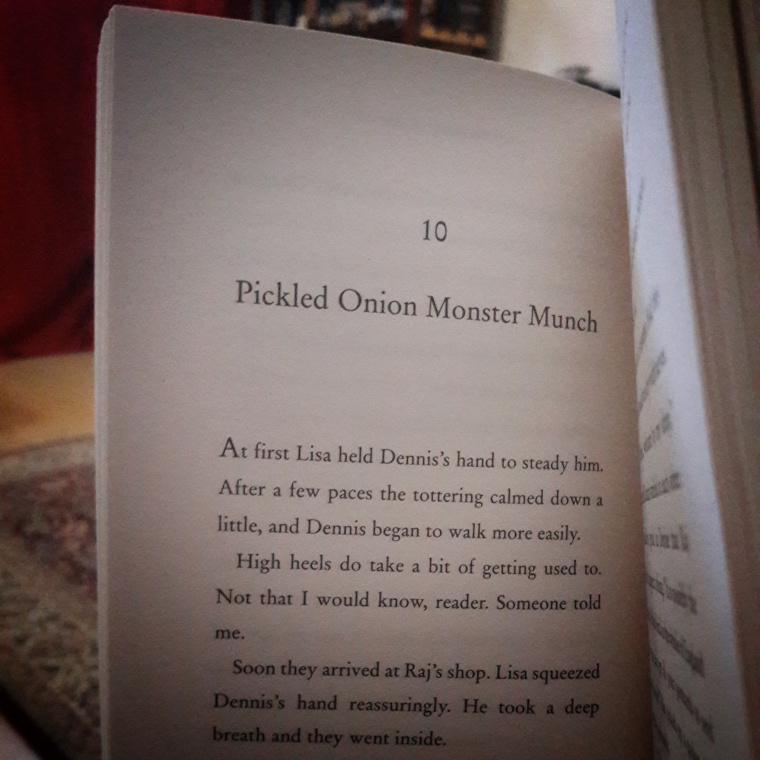
The new school year is starting up soon. So for schools and teachers, I’m continuing this series of posts on content from Dave Gray’s and Sunni Brown’s book Gamestorming, which contains a variety of business-development and business-improvement games for rethinking strategy and tactics… and how to adapt Gamestorming for an education environment.
Schools by their very nature are quietly conservative, no matter how progressive they are in philosophy. Part of the reason for that is that schoolteachers work with kids — and what worked with one group of kids in past years is likely to work with another group of kids in the present. Innovation is difficult. (It’s part of the reason why it’s better to get teachers in the middle years of their teaching career — no set of philosophies or teaching theories is adequate to actual contact with actual children, so teachers with actual experience have more tactics and systems that work with students “in their heads” and “in their hands”… but new things still surprise them sometimes, and they invent new strategies on the fly out of the fabric of their experiences).
The Pre-MortemSchools still get things wrong. One of the most complicated things they get wrong is the happy enthusiasm at the start of the school year — all the teachers are moderately well-rested after a couple of months away (or not — teachers are sometimes frazzled in August after summer work taken on to pay for their teaching career). The administration and faculty have had a few months to remember their most difficult students with fondness, to let the rougher memories subside, to ignore any community challenges or failures experienced in the past year, and to otherwise let the previous year have a golden glow about them. And, of course, summer is usually when new policies, schedules, procedures, and curriculum changes get rolled out and planned… well before those polices and programs have actually been tested by actual students.
So my inner Goth is always quietly pleased by the idea of the Pre-Mortem. When using this game, a group of teachers and administrators identify all of the ways that this current year might wind up a disaster. 
In my example, you can see that I’ve created the sort of ambitious program that many schools roll out in the fall. There’s a set of big goals to achieve, and a variety of plans to achieve them. By writing down the big goals, we can see the big picture, and identify the plans that help those goals get achieved.
Every single one of those plans has a person behind it. Plans don’t come out of nowhere — a person uncovered the idea, and began to push that idea… and now their idea is ON.THE.LIST. And none of those people want to hear how their program died, especially not at the start of a school year, before it’s even had a chance to succeed.
But.
Schools need to focus on the first item on their checklist, which is teach children and make a good-faith effort to keep them safe. That’s the first order of business, and all other plans have to be subject to that particular standard. So anything else can — and should be — subject to a pre-mortem analysis, to make sure that it actually achieves its goals.
So once the the goals are announced, and the plan for achieving those goals is on the board… it’s time to do step three, which is to identify the things that go wrong.
Many teachers, even ones who’ve spent their whole careers in one school or one school district, have seen the same kinds of issues again and again. Issues of communication, issues of leadership, issues of personnel management, issues of parent-student-teacher interaction, issues of curriculum, issues of trying to do too much. The Pre-Mortem is an effort to gather and collect that collective wisdom, to write it down, to present it together, and to try to identify certain ways that a group project (like a really amazing school year) might fail before it’s had a chance to fail.
If you could identify what killed the patient before the operation even started (leaving a sponge inside, letting the surgical incision be open for too long, the wrong medication administered), you would do that. In fact, Atul Gowande in his book The Checklist Manifesto, designed a process that derived from a Pre-Mortem exercise very much like this: “what are the top ten mistakes surgical teams make at the outset of a surgery, that then result in the death or further injury of the patient? How can we avoid those mistakes?”
So maybe, instead of all the hoopla and celebration that accompanies the start of the school year in most schools, we should begin with a more gothic exercise draped in funereal black:
- Imagine it’s early summer in 2018
- What went wrong?
- Why was it such a terrible year?
- What could we have fixed earlier than we did?
- What common pitfalls could we have avoided?
Imagination serves a useful purpose, even if the results are gloomy. It gets us talking about our blind spots and our failures, which is difficult. But if it allows us to make the year more successful for everyone, before the school year even starts, then that short few hours of gloom and doom will make everyone’s year that much better, by identifying some risks before they take root.
Rate this:Share this:
- More





